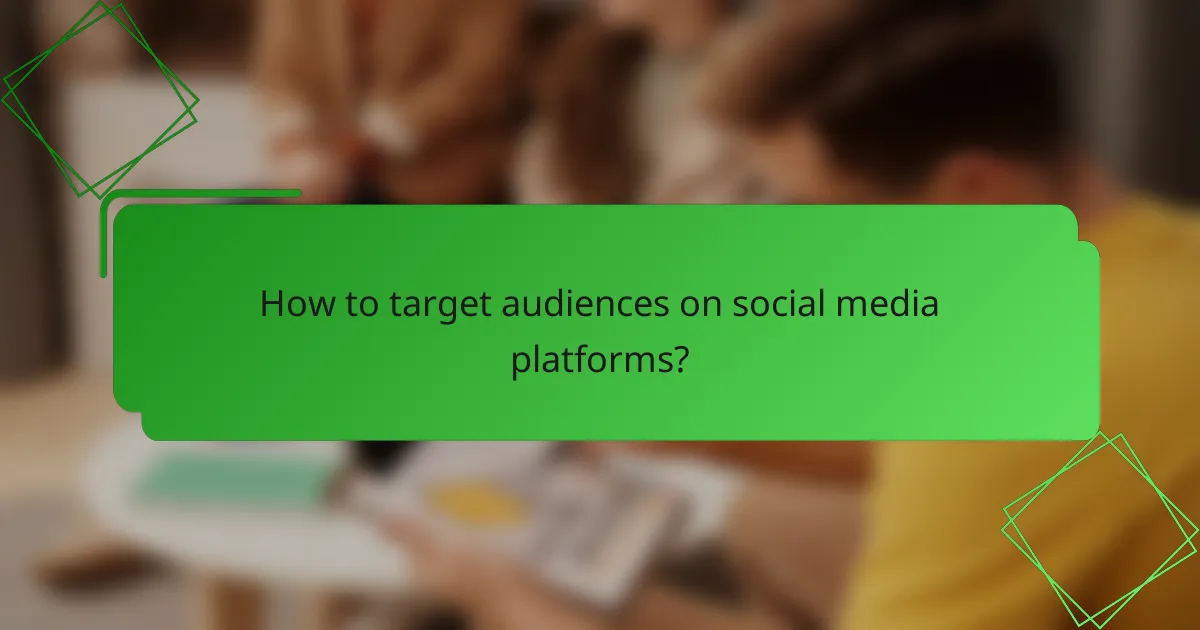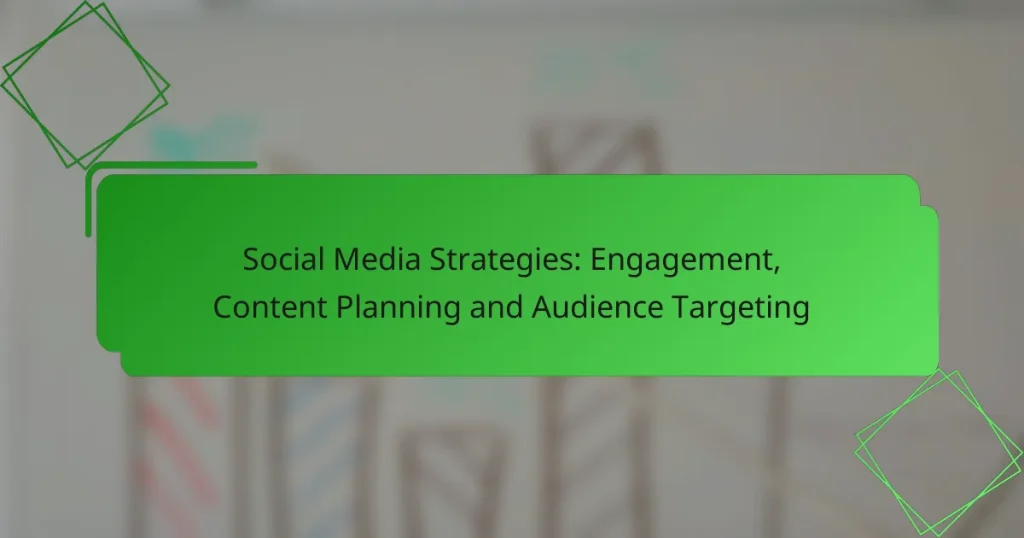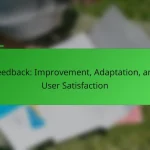In today’s digital landscape, effective social media strategies are essential for enhancing engagement and building a loyal community. By focusing on interactive content and meticulous planning, brands can create meaningful connections with their audience. Additionally, precise audience targeting allows for tailored messaging that resonates with specific user groups, ultimately driving higher interaction and conversion rates.

How to enhance social media engagement in the US?
To enhance social media engagement in the US, focus on creating interactive and relatable content that encourages participation. Engaging your audience through various formats can significantly boost interaction rates and foster a sense of community.
Utilize interactive content
Interactive content, such as polls, quizzes, and surveys, invites users to participate actively rather than passively consuming information. This type of content can increase engagement rates by making followers feel involved and valued.
Consider incorporating tools like Instagram Stories polls or Facebook quizzes to gauge audience preferences. Aim for a mix of fun and informative content that resonates with your audience’s interests.
Leverage user-generated content
User-generated content (UGC) involves sharing posts created by your audience, which can enhance authenticity and trust. Encourage followers to share their experiences with your brand, and feature their content on your platforms.
For instance, you could create a specific hashtag for customers to use when posting about your products. This not only showcases your community but also provides you with valuable content to share.
Implement live video sessions
Live video sessions allow real-time interaction with your audience, making them feel more connected to your brand. Use platforms like Facebook Live or Instagram Live to host Q&A sessions, product launches, or behind-the-scenes looks.
Promote these events in advance to build anticipation and encourage participation. Aim for sessions that last between 30 to 60 minutes to maintain viewer interest without overwhelming them.
Host social media contests
Contests can significantly boost engagement by incentivizing participation. Create simple contests that require users to like, share, or comment on your posts to enter, increasing visibility and interaction.
Ensure the prizes are relevant to your audience, such as discounts or products. Set clear rules and deadlines to encourage timely participation and maintain excitement.
Engage with audience comments
Responding to comments on your posts fosters a sense of community and shows that you value your audience’s input. Make it a habit to reply to both positive and negative comments to build rapport and trust.
Consider dedicating time each day to engage with your audience, aiming for a response time of under 24 hours. This practice not only enhances engagement but also encourages more users to interact with your content in the future.

What are effective content planning strategies?
Effective content planning strategies involve organizing and scheduling content to maximize engagement and reach. These strategies help ensure that content aligns with audience interests and leverages insights from analytics.
Create a content calendar
A content calendar is a vital tool for planning and organizing your social media posts. It allows you to visualize your content schedule, ensuring a consistent flow of posts across platforms. Aim to plan content at least a month in advance, marking key dates and themes relevant to your audience.
When creating your calendar, include details such as post types, publishing times, and platforms. This helps streamline your workflow and allows for timely adjustments based on current events or audience feedback.
Utilize analytics for insights
Analytics provide critical insights into how your content performs and how your audience engages with it. Regularly review metrics such as engagement rates, reach, and click-through rates to understand what resonates with your audience. Tools like Google Analytics or platform-specific insights can guide your content strategy effectively.
Use these insights to refine your content planning. For instance, if videos perform significantly better than images, consider increasing your video content production. Adjust your strategy based on data trends rather than assumptions.
Incorporate seasonal trends
Seasonal trends can significantly enhance your content’s relevance and engagement. Identify key holidays, events, or seasonal themes that align with your brand and audience interests. For example, create content around major holidays like Christmas or local events that resonate with your community.
Planning content around these trends can boost visibility and engagement. Use a mix of promotional and informative posts to keep your audience engaged throughout the season.
Align content with audience interests
Understanding your audience’s interests is crucial for effective content planning. Conduct surveys, engage with followers, and analyze past content performance to identify topics that resonate. Tailor your content to address these interests, ensuring it is relevant and engaging.
Consider segmenting your audience based on demographics or behaviors to create targeted content. This approach can lead to higher engagement rates and a more loyal following, as your audience feels understood and valued.

How to target audiences on social media platforms?
Targeting audiences on social media platforms involves identifying specific groups of users based on their interests, demographics, and behaviors. This strategic approach ensures that your content reaches the right people, maximizing engagement and conversion rates.
Define audience personas
Creating audience personas is essential for effective targeting on social media. These personas represent fictional characters that embody the characteristics of your ideal customers, including age, gender, interests, and online behavior. By defining these personas, you can tailor your content and messaging to resonate with specific segments of your audience.
To develop audience personas, conduct surveys, analyze existing customer data, and utilize social media insights. Aim to create 3-5 distinct personas that reflect different segments of your target market, which will guide your content strategy and engagement efforts.
Use platform-specific targeting tools
Each social media platform offers unique targeting tools that allow you to reach specific audiences effectively. For example, Facebook provides options to target users based on location, interests, and behaviors, while LinkedIn focuses on professional attributes like industry and job title. Familiarizing yourself with these tools can enhance your targeting precision.
When setting up your campaigns, take advantage of custom audiences and lookalike audiences to reach users similar to your existing customers. Regularly review and adjust your targeting settings based on campaign performance to optimize results.
Analyze competitor audiences
Studying your competitors can provide valuable insights into audience targeting strategies. By analyzing their social media presence, engagement rates, and follower demographics, you can identify gaps in your own approach and discover new audience segments to target.
Use tools like social media analytics and competitor analysis platforms to gather data on your competitors’ audience engagement. Look for patterns in their content and interactions to inform your own targeting strategies and improve your outreach.
Segment audiences by behavior
Segmenting audiences by behavior allows you to tailor your messaging based on how users interact with your content. This can include their engagement levels, purchase history, or responses to previous campaigns. By understanding these behaviors, you can create more relevant and effective content.
Consider using tools that track user interactions, such as website analytics and social media insights, to identify behavioral patterns. Segment your audience into categories like active users, occasional visitors, and non-engaged users, and develop targeted campaigns for each group to enhance engagement and conversion rates.

What metrics should be tracked for social media success?
To measure social media success, track metrics that reflect engagement, reach, conversions, and follower growth. These indicators provide insights into how well your content resonates with your audience and the effectiveness of your overall strategy.
Engagement rate
Engagement rate measures the level of interaction your content receives, including likes, shares, comments, and saves. It is typically calculated by dividing the total engagement by the total reach or impressions, then multiplying by 100 to get a percentage. A higher engagement rate indicates that your audience finds your content valuable and relevant.
To improve engagement, focus on creating high-quality, relatable content that encourages audience interaction. Avoid posting solely promotional material, as this can lead to lower engagement rates.
Reach and impressions
Reach refers to the total number of unique users who see your content, while impressions count how many times your content is displayed, regardless of whether it was clicked. Understanding both metrics helps gauge the visibility of your posts and the effectiveness of your distribution strategy.
To enhance reach, consider using targeted ads or collaborating with influencers. Regularly analyze which types of posts generate the most reach and adjust your content strategy accordingly.
Conversion rate
Conversion rate measures the percentage of users who take a desired action after interacting with your content, such as signing up for a newsletter or making a purchase. This metric is crucial for evaluating the effectiveness of your social media campaigns in driving business goals.
To increase conversion rates, ensure your calls-to-action (CTAs) are clear and compelling. A/B testing different CTAs can help identify which messages resonate best with your audience.
Follower growth rate
Follower growth rate indicates how quickly your audience is expanding over a specific period. It is calculated by taking the number of new followers gained during that time, dividing it by the total number of followers at the start, and multiplying by 100.
To foster follower growth, consistently post engaging content and interact with your audience. Running contests or offering exclusive content can also attract new followers and encourage sharing among their networks.


